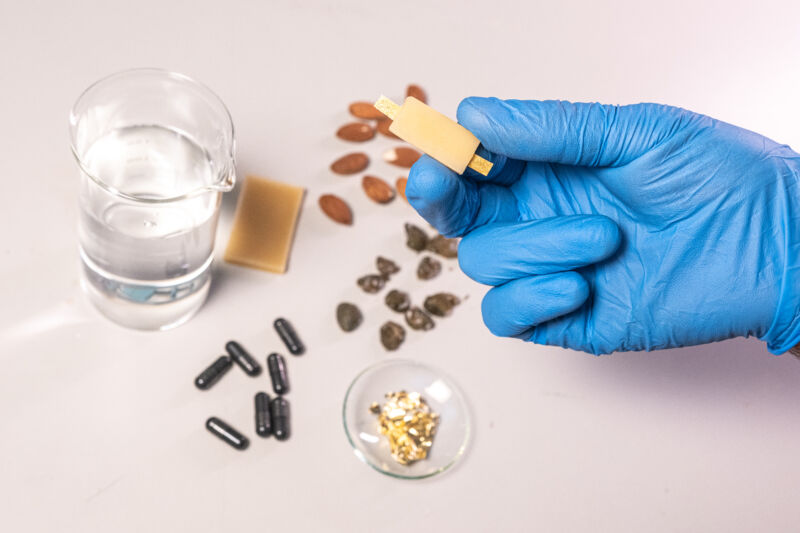
Image courtesy of the Italian Institute of Technology
Researchers at the Italian Institute of Technology (IIT) in Milan were able to build a fully rechargeable battery using entirely edible, food-grade materials. This may seem like little more than a fun experiment but it could actually be a life-saving development.
The main use case for edible batteries is in children’s toys. Billions of batteries are bought in the US every year and many of them go into various kinds of toys.
Kids have a tendency to eat whatever they come across and batteries are no exception. Connecticut Children’s Medical Center says that 2,500 kids in the US swallow (or put in their ears or nose) button batteries every year. This doesn’t even include other, more popular forms of batteries.
Swallowing most kinds of batteries used today can be extremely harmful. They can cause burns and tissue damage within 15 minutes and it only gets worse as time goes on if the problem is not remedied. They could even cause life-threatening injury if left alone for too long.
Edible batteries don’t yet have enough capacity to power most kinds of toys, but they do have another important use case, medical devices. The development of medical devices has accelerated tremendously in recent years with discoveries like effective drug delivery robots, biosensors and more.
These devices sometimes need to be powered with batteries and they usually only need a tiny amount of power. This makes the edible battery created at IIT perfect to power these devices.
How Does it Work?
The edible battery designed at IIT isn’t just edible, its also extremely convenient. You don’t need to mine anything to get the materials you need. In fact, you can get everything you need at grocery stores.
The cathode is made with Quercetin, a pigment derived from almonds, kale, red onions and capers. The anode is made of riboflavin, also known as Vitamin B2. The anode and cathode are separated by nori, a kind of edible seaweed, dipped in an electrolyte solution.
Activated charcoal is also added to boost the electrical conductivity within the battery. The electrodes connect with golden foil and are smothered with beeswax.
The edible battery works like any other. When charging the battery, electrons move from the cathode (the Quercetin), through the nori to the anode (the riboflavin). When you use the battery, electrons move in the opposite direction.
Related Articles:
22 Best Crypto To Buy Now – Which Is The Best Cryptocurrency to Invest in 2023?
Sam Altman to Testify Before Congress as Lawmakers Grow Wary of AI